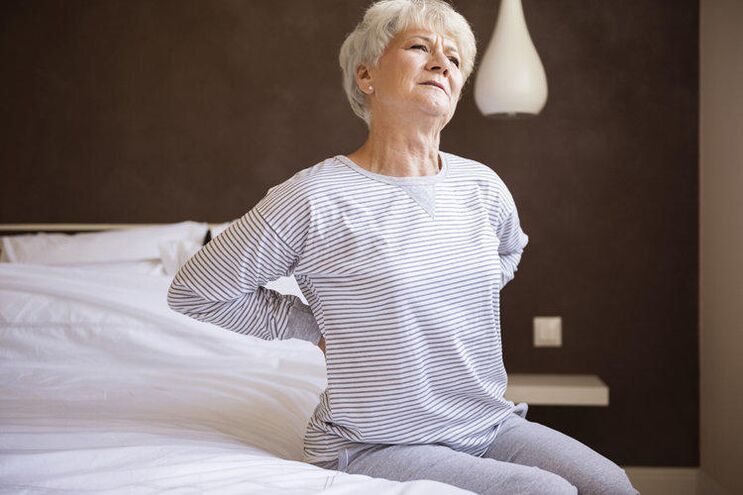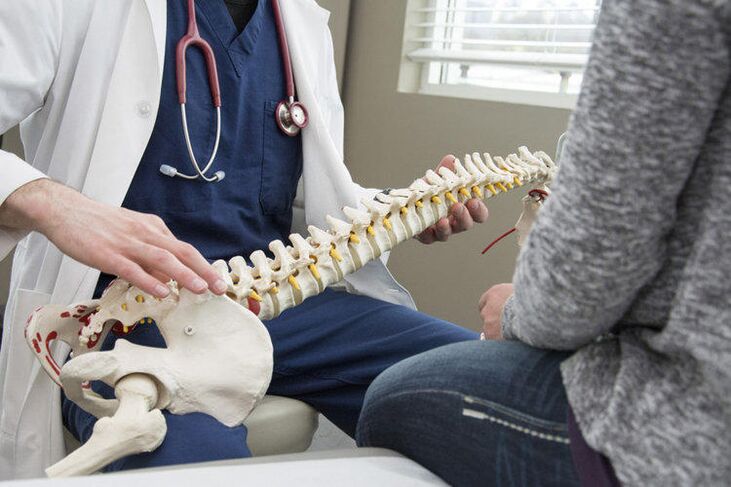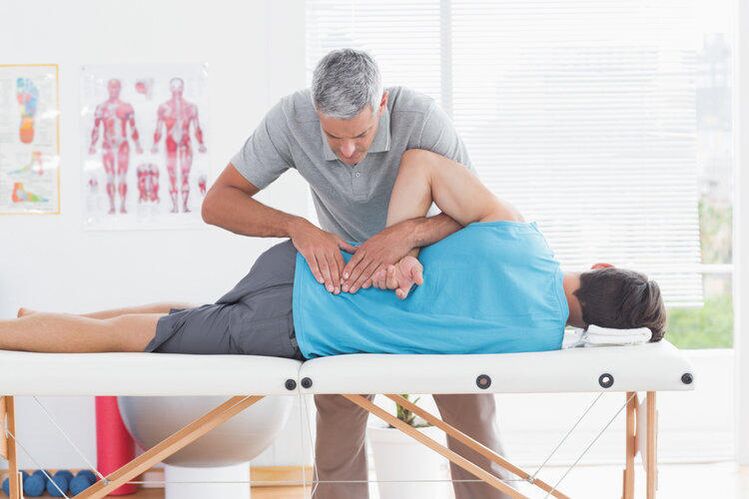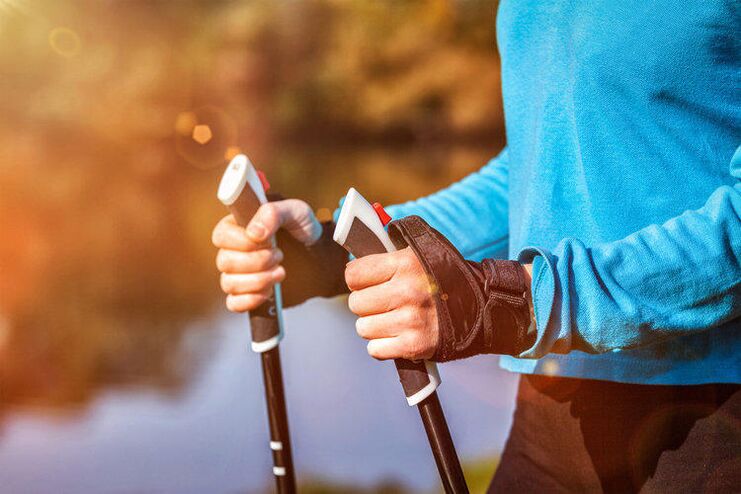Osteochondrosis is a disease in which degenerative-dynist changes are diagnosed in the cartilage tissues of the spine and, along with the structure and functionality of the intervertebrate discs. Depending on the localization of injured tissues, the cervix, chest and lumbar osteochondrosis can be distinguished.

What is osteochondrosis?
Osteocondrosis is a disease of the spinal column in which degenerative and distrophic lesions of intervertebral discs occur. With the development of osteochondrosis, degenerative-dynamic lesions apply to the spinal tissue.
The main feature of the development of osteochondrosis is cervical pain, back, lower back area, progression, pain in hands, chest, shoulders, comba, etc. , Negative dynamics of osteochondrosis, muscle tissue atrophy, damaged sensitivity, and provoking, provocative, provoking sensitivity. displacement. In the absence of time therapy, osteochondrosis develops in an incurable state.
Causes of osteochondrosis
The main factor in the development of osteochondrosis is the uneven load of spine. It is customary to carry a bag on one shoulder or one hand in an incorrect pose in a sitting position, a dream on a mattress too soft, a tall pillow, anatomically defective type of shoe is a common cause of the inadequate distribution.
Further risk factors include hypodynamia, sedentary lifestyle, excessive weight, back injuries, lower limbs, flat feet and other muscular bone, and age-related degenerative processes in the age-related changes in spinal column blood supply.
The following factors can play a role in the etiology of osteochondrosis:
- physical surge of the body;
- Neuro-emotional exhaustion;
- Metabolic disorders, poisoning, stomach -intestinal tract disease that prevents complete assimilation of nutrients;
- In particular, professional risks work on vibration platforms;
- genetic predisposition;
- Posture violation during active growth, skoliosis;
- Wearing uncomfortable shoes (crowded, heel);
- extended and/or regular dehydration;
- lower levels of diet, hypovitaminosis;
- smoking;
- Pregnancy, especially in combination with a multiple, underdeveloped muscle seeker (due to the displacement of the body's center of gravity).
Stages of the development of osteochondrosis
Osteochondrosis passes through four stages in the dynamics of the disease:

- The osteochondrosis of Stage 1 (Cape) is characterized by the initial stage of the pulpic core of the intervertebral disk. Due to excessive load, the process of seed dehydration (dehydration) begins, which leads to a decrease in the height of the plate and the occurrence of cracks in the fibrous ring. Symptoms are usually missing at this stage, and less discomfort may occur if you stay in an unpleasant static pose, active motion, etc. for a longer period of time. ;
- In 2 stages, the height of the discs leads to a decrease between the destruction of vertebrates and leagues and the sagging of vertebrates and tapes. This causes increased mobility of the vertebrae with the affected discs, which are dangerous during their displacement or slip. In the second phase of the disease, discomfort, pain, especially for certain types of load, movements, positions;
- The 3 stages (degrees) of osteochondrosis are characterized by the formation of prolapse and the protrusion of intervertebral discs, accompanied by subluxis and/or the formation of arthrosis of the intervertebral joints. In some types of movement, patients feel stiffness, insufficient mobility, tingling sensation, and may be numbness in the limbs. At this stage, osteochondrosis is clearly felt in the back, neck, lumbosacral class or coccyx, depending on localization of affected discs;
- In 4 stages of osteochondrosis, the body tries to adjust the consequences of hypermobility of the vertebrae and adapt to the impaired functionality of the spinal column. Osteophytes, new bone formations that grasp the spine fixation, develop at the vertebrae points. In some cases, however, osteophytes can cause nerve violations and may be injured by vertebrae. Fibrous ankylosis begins in intervertebral discs and joints. In the absence of microtrauma and nerve roots, the symptoms of the disease are reduced.
Symptoms of osteochondrosis
The main symptoms of osteochondrosis are a sense of discomfort and/or cervical pain. The severity of the sensations and the presence of further symptoms depend on the stage of the disease. When examining the patient and collecting a history, the specialist makes an initial diagnosis, assuming that the presence of osteochondrosis is observed in the transverse or longitudinal plane of the spine by visually defined curvature of the spine. The pathologies of the cervix and lumbar vertebrae are much more common than degenerative and dystrophic changes in the sternum.
Signs of osteochondrosis that the patient feels include the periodic or lasting sensation of the back fatigue that has been deleted or pronounced, depending on the stage of the disease and pain. The pain can be localized in the neck, back, chest, shoulder belt, and can be destroyed, and can destroy the movement of the upper limbs.
The clinical picture of osteochondrosis depends largely on the localization of pathology, the degree of process development and the unique characteristics of patients. The pathology of intervertebral discs, displacements, protrusion, hernia and osteophytes have various consequences. The most common, violation of normal blood circulation of tissues, tightening nerve endings, dysfunction of spinal canal, edema, tissues and structures distinguish.
Such consequences are accompanied by a variety of symptoms, leading to misdiagnosis of diseases.
The most common and characteristics of osteochondrosis are as follows:- pain in the back, neck, lower back, shoulder belt, ribs;
- inconvenience, stiffness, tendency, turning, increased muscle tension in certain situations of the body;
- feeling of numbness of the upper and lower limbs;
- muscle and joint discomfort, muscle spasm;
- headache, dizziness, increased fatigue;
- pain in the heart;
- violation of hands sensitivity;
- Muscle hypotension.
Symptoms of osteochondrosis differ depending on the localization of pathology:
- With osteochondrosis of the cervical spine, radiated to the cervical pain, hands, shoulders, shoulders and shoulders; Headache, dizziness, blink of "flies" or spots in the eyes, the noise of the ears is observed;
- In the case of damage to the chest spine, the pain can be observed in the chest area, in the heart, in the inner surface of the shoulder, in the armpit, and breathing discomfort, and shortness of breath is possible;
- Osteochondrosis of the lumbosacral spine is often connected to lower -back pain, legs, thighs or irradiation of pelvic organs, and sexual dysfunction.
Superficial symptoms - back fatigue, pain - may not only indicate the presence of osteochondrosis, but also the addition of other diseases or other pathological processes and disorders that are not linked to the dystrophy of the intervertebral discs. Diagnosis of osteochondrosis can only be performed by a specialist, and medication with such symptoms itself is unacceptable.
Diagnosis of osteochondrosis

Instrumental test methods are used to produce diagnosis:
- X -a -spinal examination;
- myelography;
- Sensitivity, neurological survey of reflexes.
Further methods prescribed and clarified the diagnosis, the stage of pathology are as follows:
- Computer tomography of the spine (CT);
- nuclear magnetic resonance (JAMR);
- Magnetic resonance imaging (MRI).
The directions of osteochondrosis therapy
Treatment is based on an integrated approach, and depending on the stage, intensive care of 1-3 months and 1 year support measures keep the result and prevention of the decline.
Osteochondrosis is performed in two directions depending on the degree of osteochondrosis and the patient's health. Conservative treatment of the disease consists of taking medicines and exercising. In almost any situation, surgical treatment cannot be the first choice method and is prescribed in the absence of positive dynamics, the progression of the disease in the background of longer conservative treatment.
In addition to therapeutic medical methods, general recommendations for osteochondrosis should be followed: observe the diet and take the measures needed for rehabilitation.
Conservative treatment of osteochondrosis
The purpose of conservative therapy is to stop the pain syndrome, normalize spine functionality and prevent negative changes
Conservative treatment of osteochondrosis includes the following type of therapy:- Drug treatment. Medicines for osteochondrosis are used to stop pain syndromes, tissue inflammatory processes and normalize the metabolic processes of the body. Expressed pain syndrome is recommended to use the drug blockade of nerve endings, which also contributes to the reduction of the severity of the muscle-tonic syndrome. The types of blocking are distinguished by the blockade of trigger points, intraosseous, aspectral, paravebral, epidural;
- Physiotherapy methods. Physiotherapeutic procedures help reduce pain, increase the effects of drugs, and use it during the rehabilitation period. Ultrasound waves, magnetic fields, low -frequency currents, laser rays, etc. Most common use
- Methods of physiotherapeutic exercises (exercise therapy) and kinin therapy. The complex of regular and proper executions contributes to posture correction, strengthen the muscle liner, a league device, normalize muscle function, reduce compression of nerve fibers and promote the prevention of complications of osteochondrosis. Normalization of metabolic processes for body exercise and kininapic procedures, restoring the complete nutrition of intervertebral discs, restoring the layout of vertebrae and discs, uniform distribution of load in the muscle bone system;
- massage. Manual massage techniques are used to improve tissue blood supply, relieve muscle cramps and clamps, and improve blood circulation. Hydromassage, as the effects listed, contributes to normalization of the body's nervous system;
- Hand therapy. Manual therapy methods are selected separately. The effect of the body on the muscle system of the body promotes the improvement of blood circulation, the circulation of the lymphatic, improves metabolism, promotes the mobility of the muscle bone, strengthens the immune system, and to prevent complications of osteochondrosis;
- Therapy with the traction (traction) method of the spine, using special equipment. The purpose of manipulations is to increase the intervertebral space to normal parameters and to correct the structure of the spinal column structure.
Preventing osteochondrosis

The causes of osteochondrosis are mainly related to the needs of the body, the malnutrition and the excessive load of the body. It is recommended to adhere to the general principles of a healthy lifestyle in order to withhold the development of abnormal changes in spine and the dynamics of existing osteochondrosis:
- Removing the possibility of hypodynamia: moderate sport: charging, running, swimming, bicycle, skis, gymnastics, types of unrelated struggle, etc. ;
- If you have a long -standing work or other activity in a long static position, you should take a break every 45 minutes to restore your blood circulation. If necessary, sitting for a long time, choose the appropriate chairs, chairs, ensure spinal support, monitor the position of the hands on the table, feet or a special rack, accustomed to posture (even back, calm shoulders);
- For night sleep you need to separate a flexible, better orthopedic mattress that has a flat surface, avoiding high or too flat pillows;
- If necessary, lift and/or wear heavy objects to avoid jerks, severity from the semi -accuracy position, use special belts that support the lower part;
- Choosing orthopedicly correct shoes: replacing the right foot, without high -heeled shoes and timely replacement help to reduce the load on the spine, which is particularly important for women during the child's time. In summer, do not ignore the barefoot walking on an uneven surface, which strengthens the foot muscles and relieves the tension of the muscle bone;
- The correct diet, the method of drinking alcohol contributes to general health and promotes metabolism to normal maintaining;
- Increased emotional ability, anxiety with muscle cramps, is worth examining relaxation methods.
















































